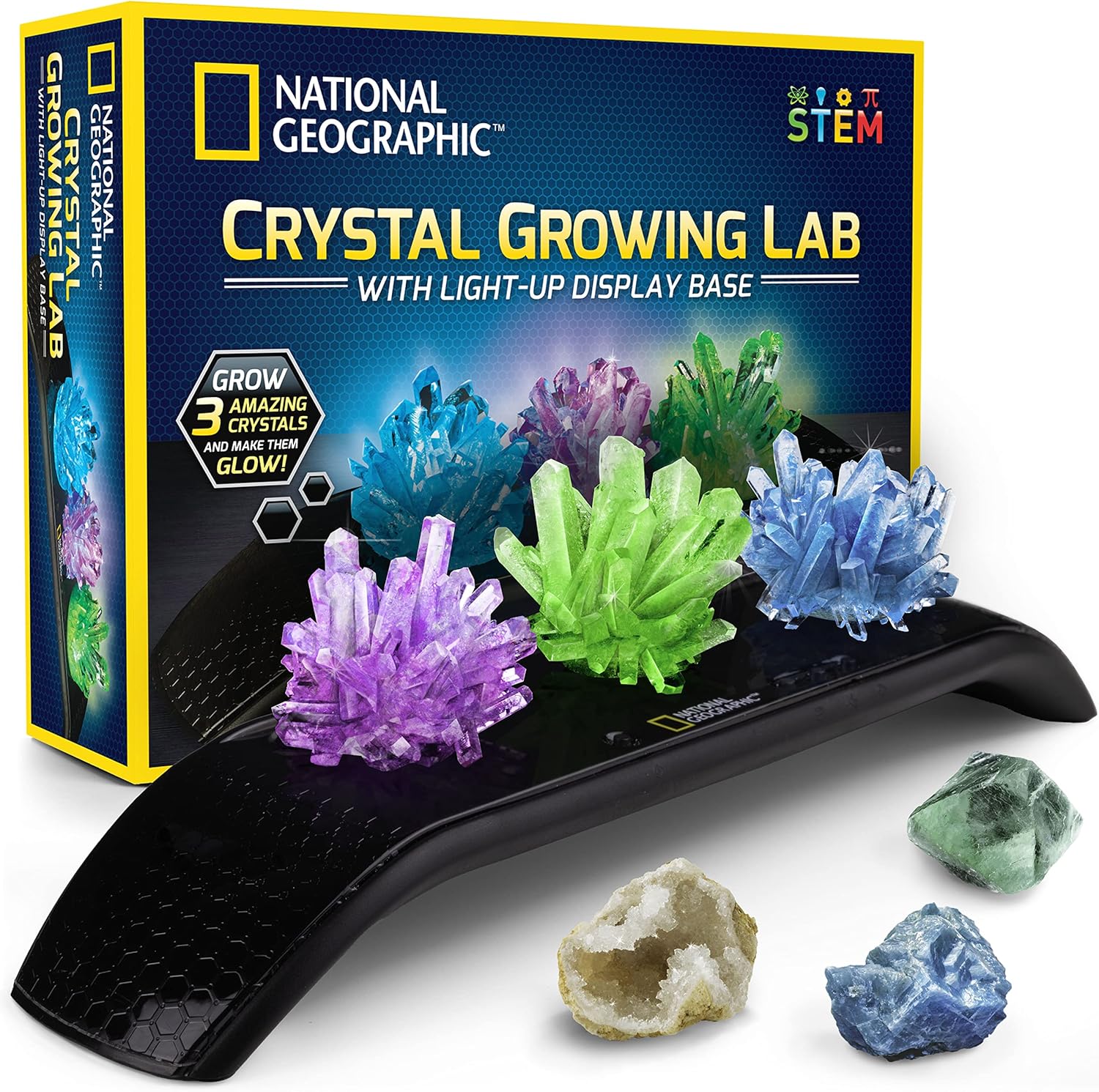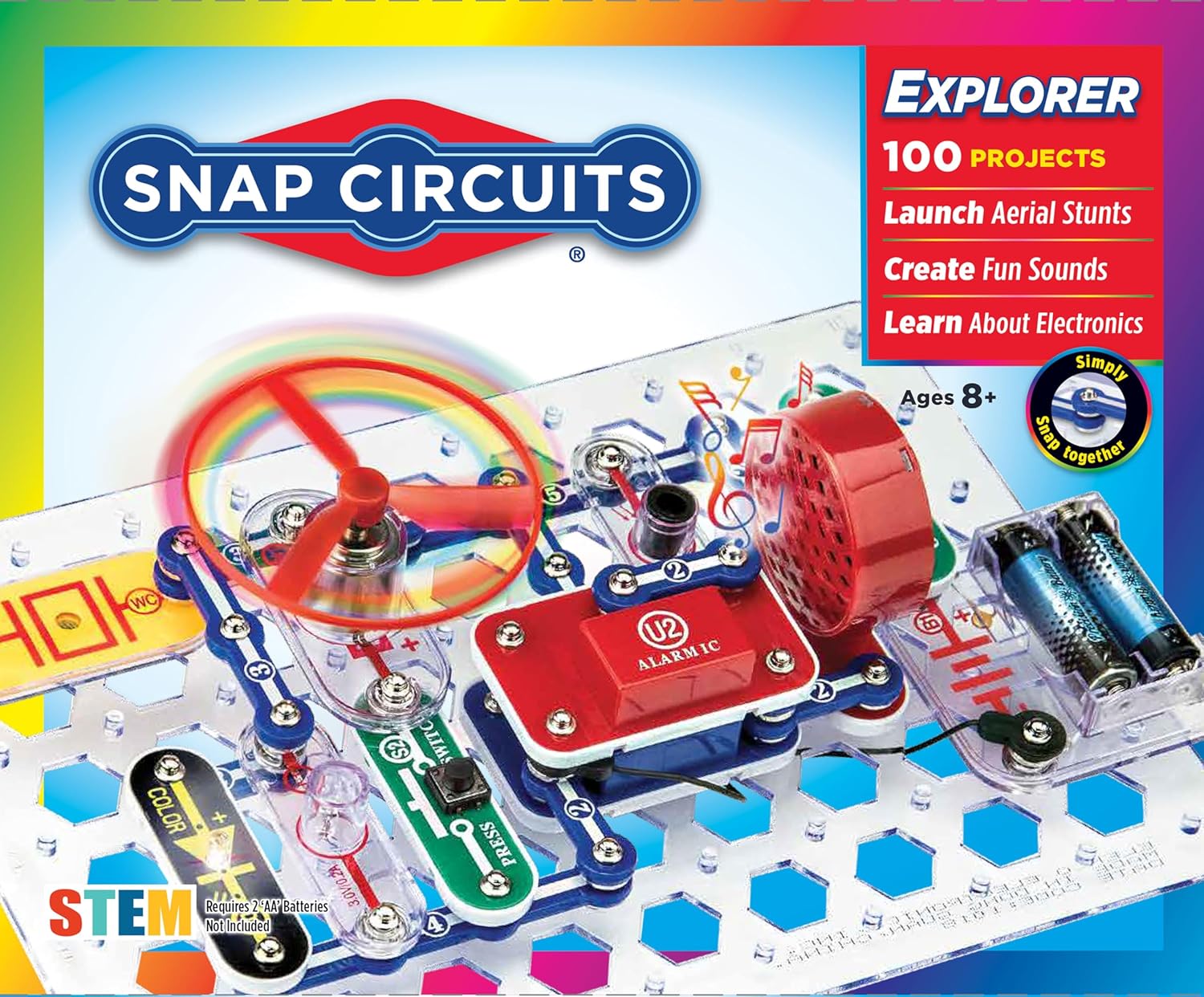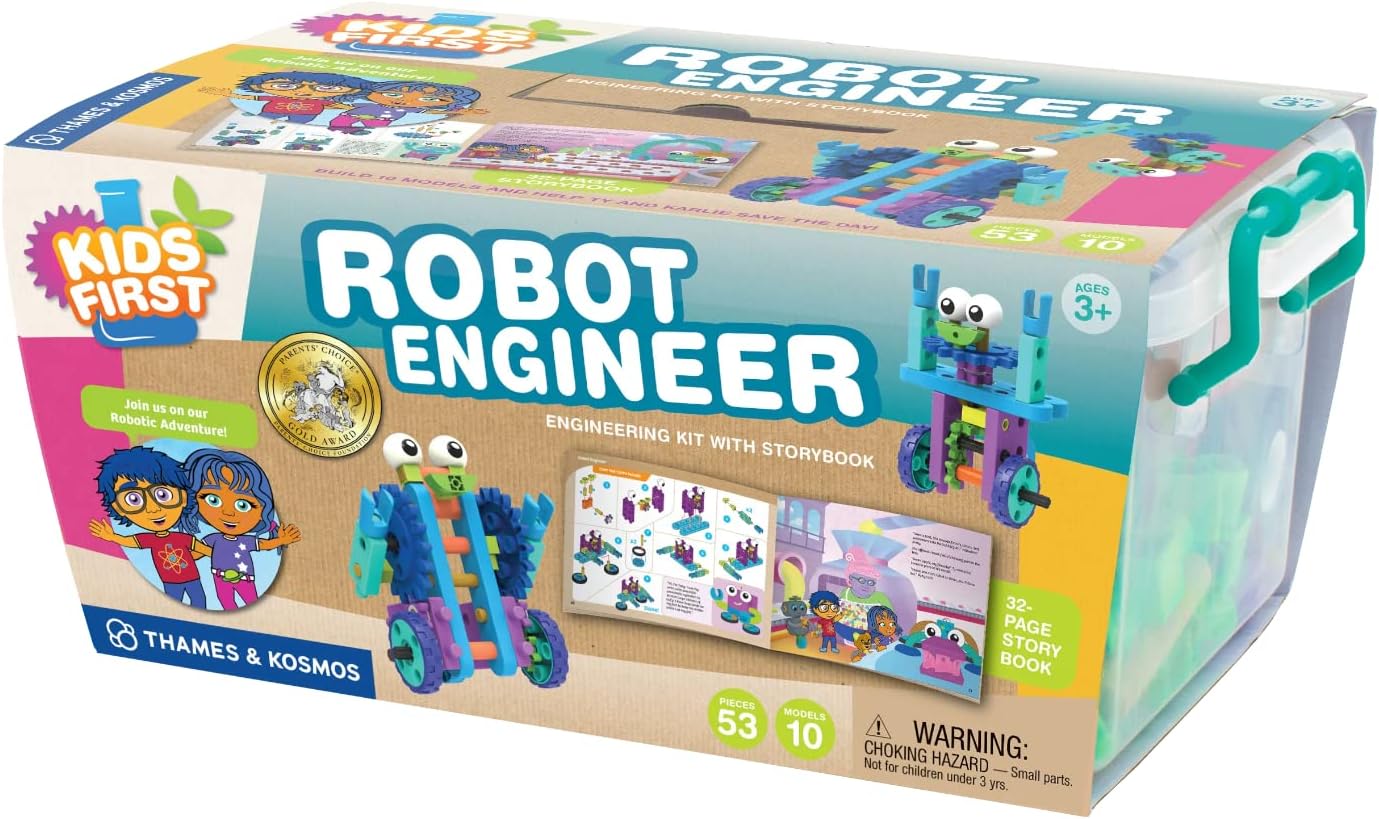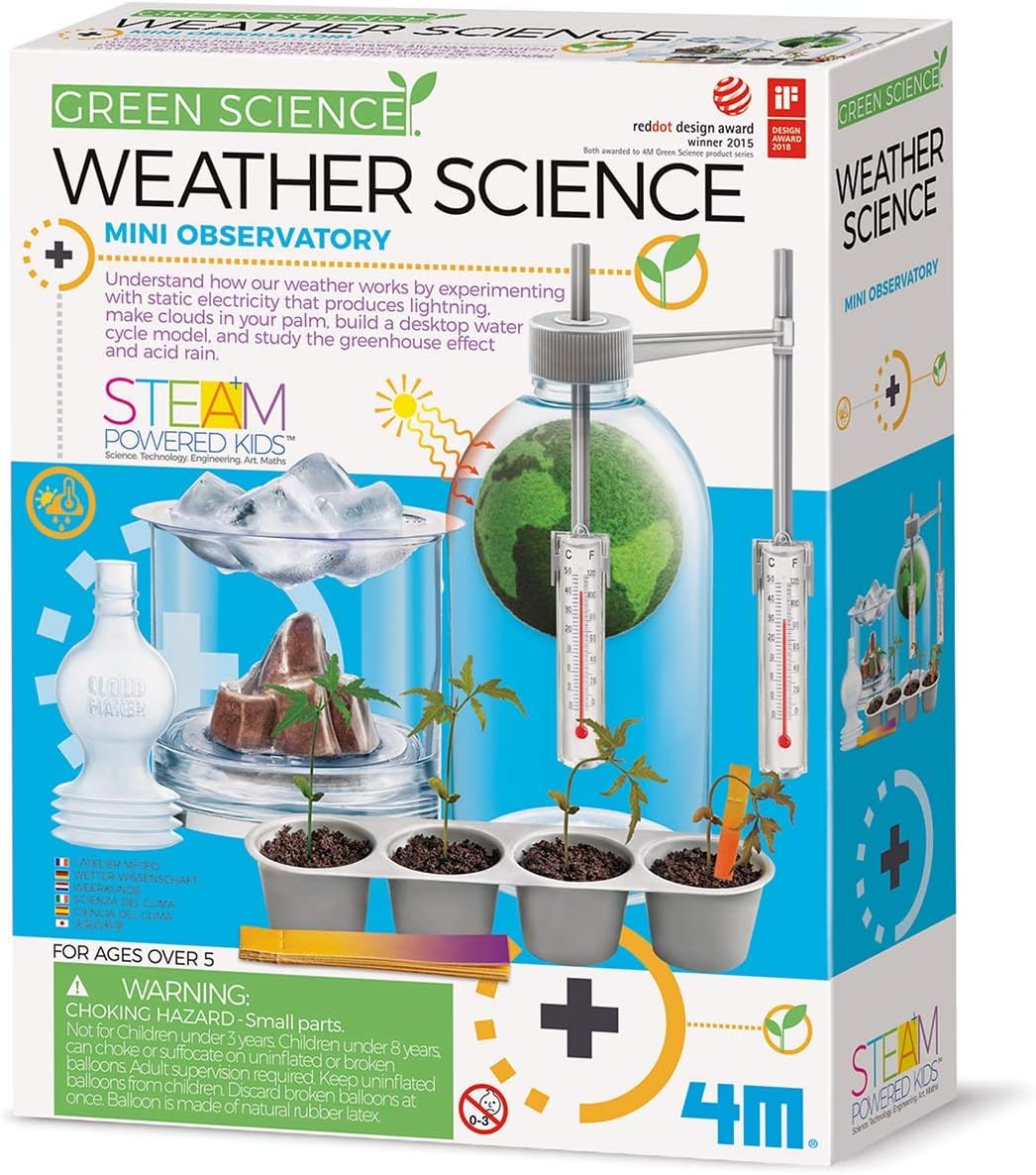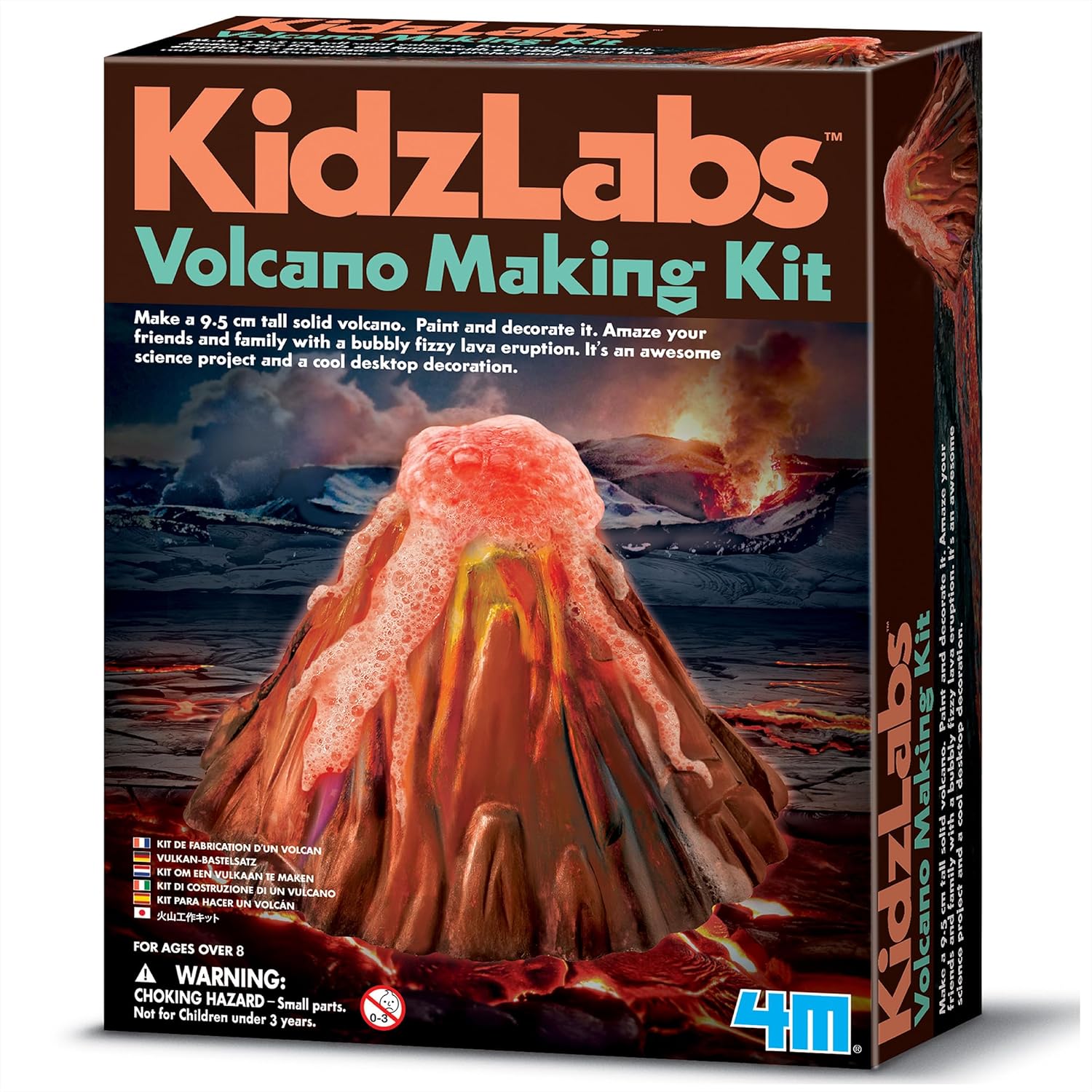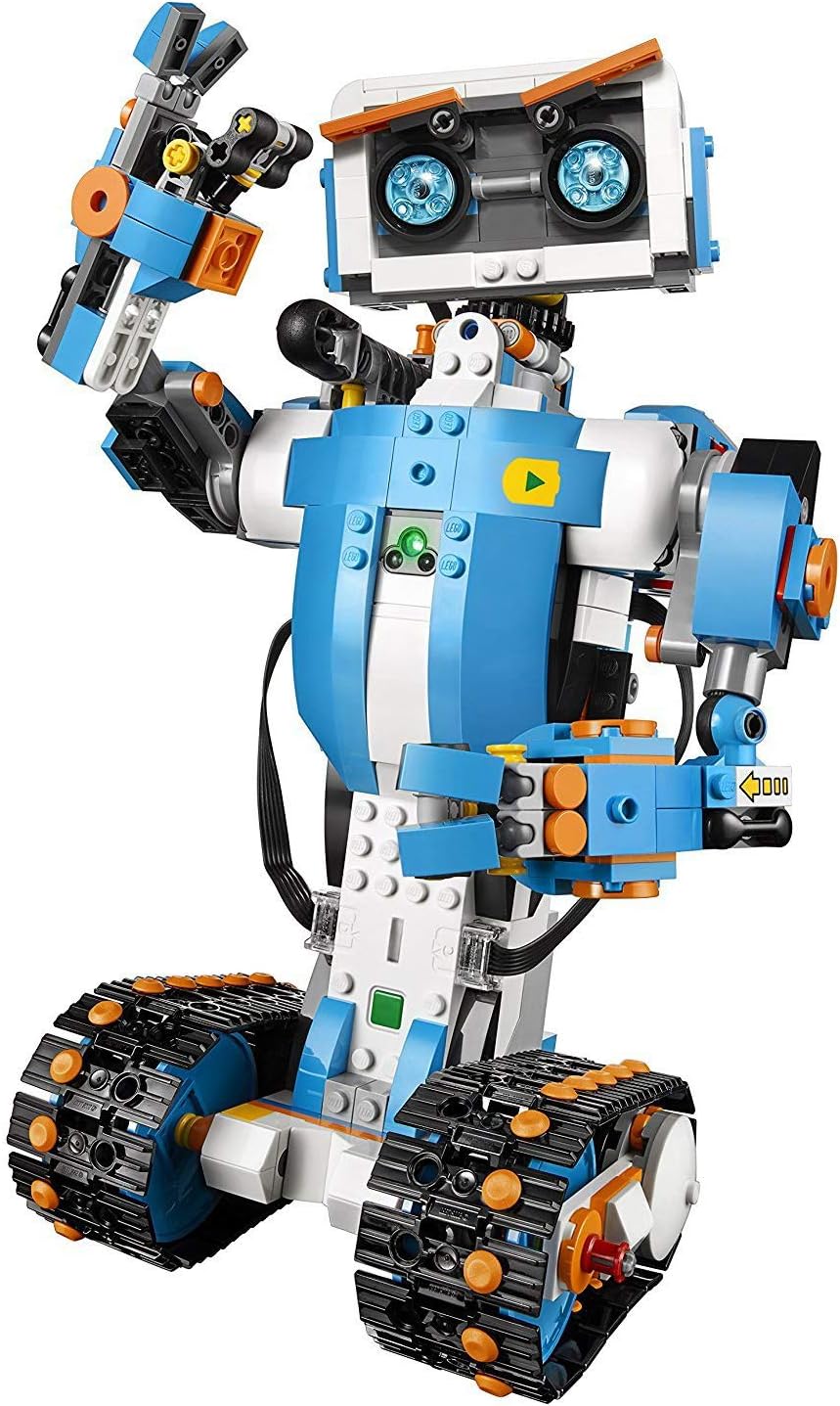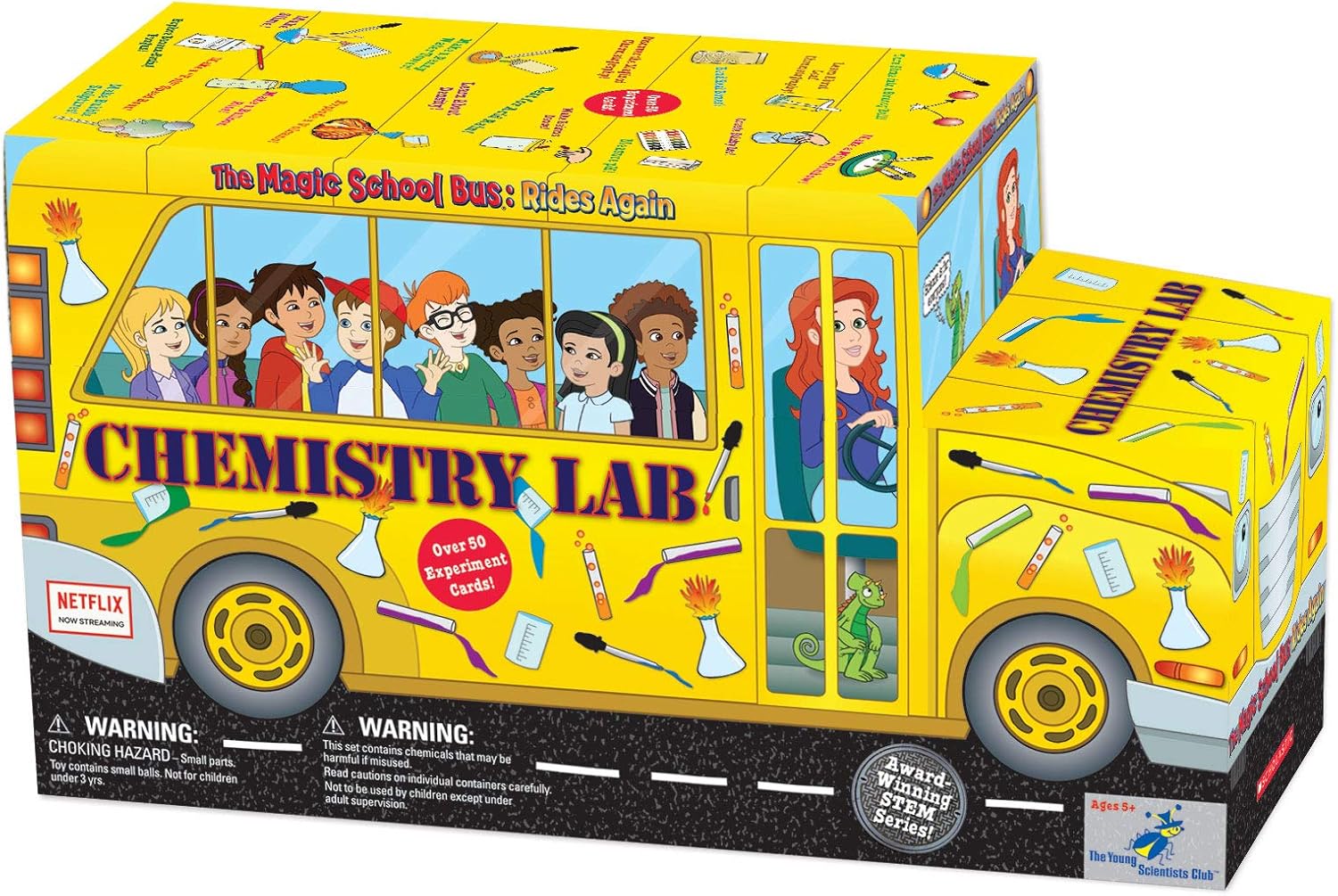Best Kids’ Science Kits for Hands-On Learning
Science kits are an incredible tool for sparking curiosity and excitement in children, introducing them to STEM (Science, Technology, Engineering, and Math) concepts in a way that’s engaging and hands-on. These kits go beyond the traditional classroom experience by offering interactive experiments and activities that encourage kids to think critically, ask questions, and explore the world around them. From simple chemistry experiments to building robots or exploring the solar system, science kits cater to a wide range of interests and abilities, making them an ideal choice for both learning and fun.
Whether you’re shopping for a curious toddler or a teenager passionate about technology, there’s a science kit tailored to every age and skill level. For younger kids, kits can teach basic concepts like color mixing, plant growth, or magnetism in a safe and playful manner. Older kids can delve into more complex topics such as coding, engineering, or chemical reactions, which challenge their problem-solving skills and deepen their understanding of STEM principles. Science kits also offer a wonderful way for parents and kids to bond while exploring new ideas together, creating a collaborative learning environment that feels more like play than work.
What Is a Kids' Science Kit?
A kids’ science kit is a pre-packaged set of tools, materials, and instructions designed to introduce children to scientific concepts in an engaging and hands-on way. These kits are created with young learners in mind, making complex topics accessible and fun through interactive experiments and activities. They cover a wide range of STEM (Science, Technology, Engineering, and Math) subjects, including chemistry, physics, biology, and engineering.
- Key Components of a Science Kit
Most science kits include everything needed for specific experiments or projects, such as:
- Materials: Items like test tubes, pipettes, magnets, circuit boards, or plant seeds.
- Instructions: Step-by-step guides that explain how to perform experiments safely and correctly.
- Educational Content: Information about the science behind the activity to enhance learning.
- Tools: Basic equipment like safety goggles, measuring spoons, or microscopes, depending on the kit.
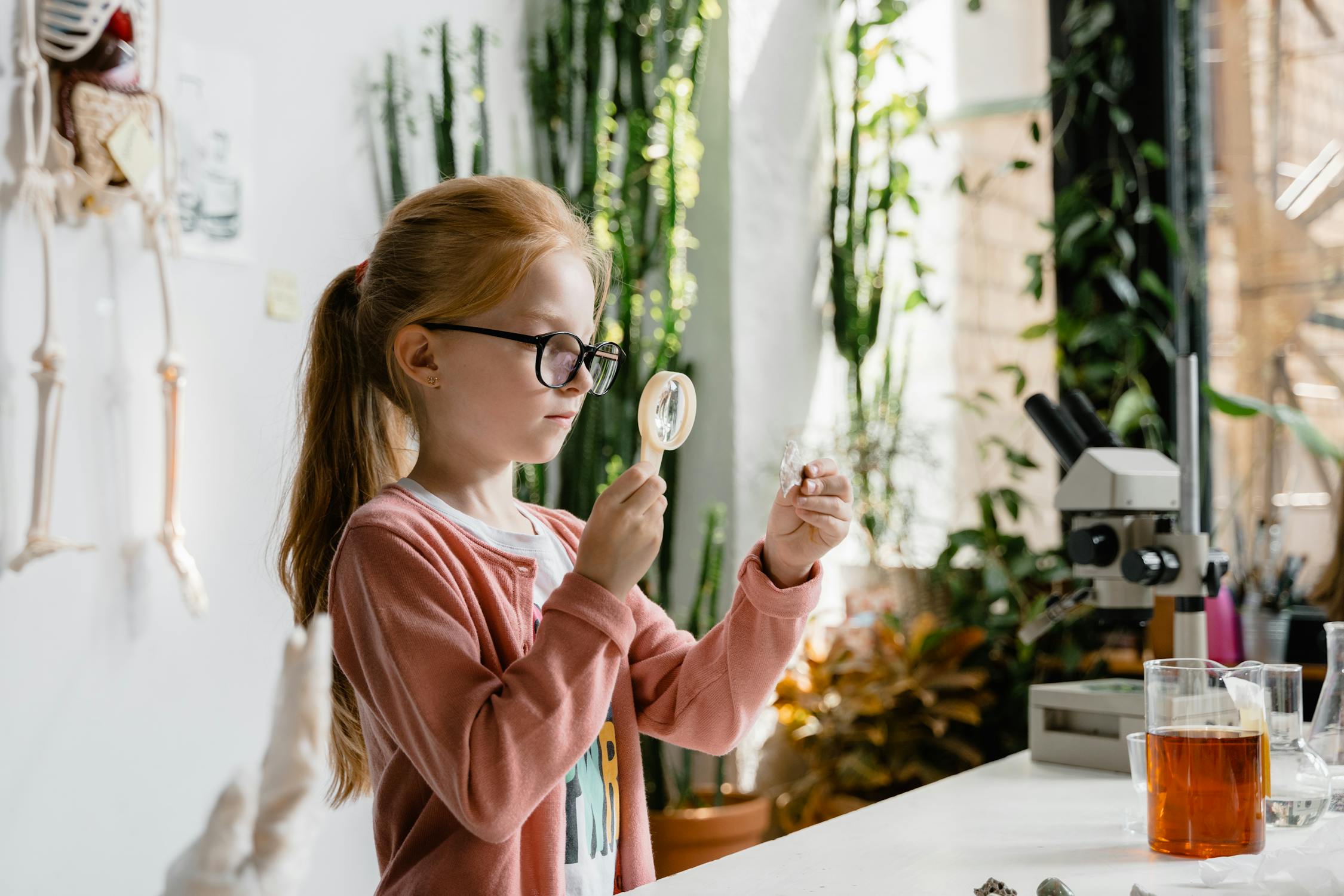
- How They Work
Kids’ science kits are designed to make learning accessible by breaking down complex concepts into manageable steps. For instance:
- A chemistry kit might guide kids through creating a baking soda volcano or growing crystals.
- A robotics kit might teach kids how to assemble a robot and program it to move.
- A nature kit might help kids observe insects or grow their own plants.
By following the instructions, kids get to see science in action, which not only builds their understanding but also keeps them engaged.
- Who Are They For?
Science kits are suitable for children as young as three years old up to teenagers. They’re tailored for different age groups, ensuring the activities are developmentally appropriate. For example:
- Preschoolers (3–5 years): Focus on sensory play and basic cause-and-effect experiments.
- School-age kids (6–10 years): Introduce foundational STEM concepts like magnetism, circuits, and the water cycle.
- Tweens and teens (11+): Dive deeper into advanced topics like chemistry, physics, or coding.
- Why Are They Important?
Kids’ science kits offer more than just entertainment—they provide valuable learning opportunities. They encourage:
- Critical Thinking: Solving problems and thinking creatively.
- Hands-On Learning: Experiencing concepts directly instead of just reading about them.
- Independence: Completing experiments gives kids a sense of achievement.
- Parental Bonding: Many kits are designed to be done together, making learning a shared experience.
Science kits are not just toys; they’re tools for sparking a lifelong love for learning and exploration. Whether your child dreams of being a scientist or just enjoys exploring how things work, a kids’ science kit can be an excellent way to nurture their curiosity.
Why Choose Science Kits?
Science kits are more than just a fun activity for kids—they are a powerful way to encourage learning, creativity, and critical thinking. Whether you’re looking to support your child’s education or simply provide an engaging screen-free activity, science kits offer numerous benefits for children of all ages. Here’s why they are worth considering:
Hands-On Learning
Science kits transform abstract concepts into real-life experiences. Instead of simply reading about chemical reactions or gravity, kids can see, touch, and experiment with these ideas firsthand. This hands-on approach helps them better understand and retain knowledge by actively participating in the learning process.
Encourages Curiosity and Exploration
Kids are naturally curious, and science kits feed that curiosity by encouraging them to ask questions and explore answers. From building a circuit to observing how plants grow, these kits give kids the tools they need to investigate the world around them and find solutions on their own.
Supports STEM Education
In a world increasingly reliant on science and technology, developing strong STEM skills is more important than ever. Science kits introduce children to key concepts in a way that feels fun and exciting, laying the groundwork for future success in school and potential careers.
Fosters Critical Thinking and Problem-Solving
Every experiment comes with challenges—whether it’s following instructions, troubleshooting issues, or making observations. Science kits encourage kids to think critically and find creative solutions, skills that are invaluable in everyday life.
Screen-Free Entertainment
In an era dominated by screens, science kits offer a refreshing alternative. They provide hours of engaging, offline activities that stimulate the mind and keep kids entertained without relying on digital devices.
Tailored for All Ages and Interests
With so many different types of science kits available, there’s something for everyone:
- Younger kids can explore sensory-based experiments like mixing colors or making slime.
- Older kids can dive into more complex topics like robotics, coding, or chemistry.
- Nature lovers can explore biology kits, while tech enthusiasts might enjoy building and programming robots.
Builds Confidence
Completing an experiment successfully gives kids a sense of accomplishment and boosts their confidence. Even when things don’t go as planned, kids learn that failure is part of the scientific process and an opportunity to try again and improve.
Encourages Quality Family Time
Science kits are a fantastic way for parents and kids to bond. Working together on experiments allows families to share in the excitement of discovery, foster teamwork, and make learning a collaborative experience.
Prepares Kids for Future Challenges
Beyond STEM, science kits teach essential life skills such as patience, perseverance, and attention to detail. These foundational skills help kids excel not only in academics but also in real-world problem-solving.
Affordable and Accessible
Science kits are a cost-effective way to bring science to life without the need for expensive lab equipment or materials. Many kits include everything needed for multiple experiments, making them a practical choice for at-home learning.
By choosing a science kit, you’re giving your child more than just a toy—you’re providing an opportunity to explore, learn, and grow. These kits inspire curiosity, build essential skills, and make learning a joyful experience, all while fostering a love for discovery that can last a lifetime.
What to Look for in a Science Kit
Choosing the right science kit can make a big difference in how engaging and educational the experience is for your child. With so many options available, it’s important to consider several factors to ensure you pick the best kit for their age, interests, and learning goals. Here’s what to keep in mind:
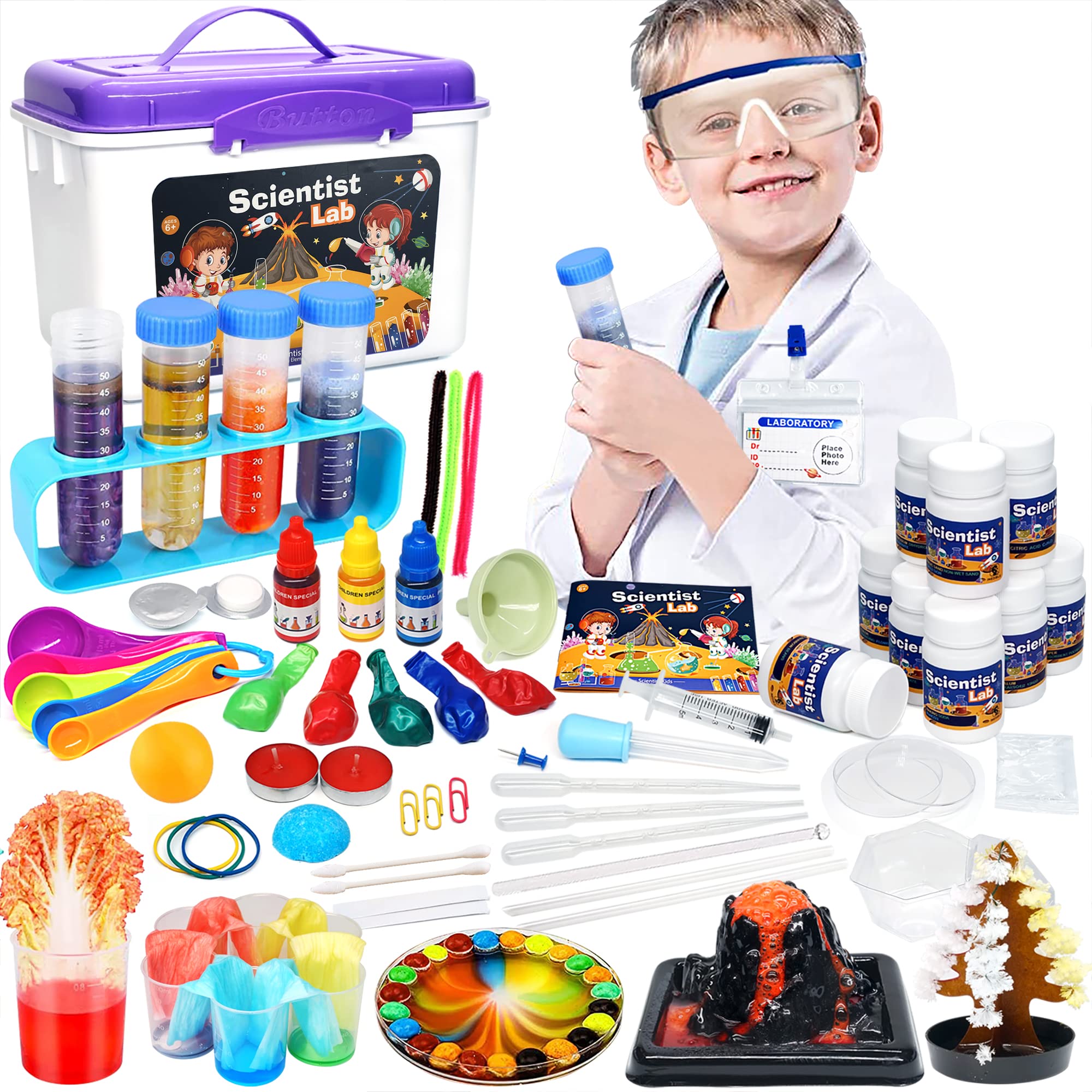
- Age Suitability
- Science kits are designed for specific age groups, so it’s crucial to select one that matches your child’s developmental stage.
- Preschoolers (3–5 years): Look for kits with large, safe components and simple experiments, like mixing colors or planting seeds.
- School-age kids (6–10 years): Opt for kits that introduce basic concepts like magnetism, electricity, or the water cycle.
- Tweens and teens (11+ years): Choose more advanced kits, such as robotics, chemistry, or coding, which offer deeper learning experiences.
- STEM Focus
Determine which STEM (Science, Technology, Engineering, Math) area your child is most interested in:
- Science: Kits covering biology, chemistry, or physics experiments.
- Technology: Robotics or coding kits for tech-savvy kids.
- Engineering: Building kits for designing structures or machines.
- Math: Puzzles or games that teach mathematical principles in a hands-on way.
- Complexity of Experiments
Consider your child’s experience level:
- Beginners: Kits with simple, step-by-step instructions and easy-to-follow activities are ideal.
- Advanced learners: Choose kits with more challenging experiments that encourage problem-solving and independent thinking.
- Educational Value
- Look for kits that not only entertain but also teach valuable concepts.
- Kits with accompanying educational materials (like guides or booklets) help explain the science behind the activities and enhance understanding.
- Quality and Durability
- Ensure the materials included in the kit are well-made and safe for children.
- Reusable components, such as sturdy tools or equipment, are a bonus for extending the kit’s lifespan.
- Ease of Use
- Clear instructions are essential, especially for younger kids.
- Look for kits that include pre-measured materials to simplify the process and reduce setup time.
- Some kits also offer online tutorials or videos, which can be helpful for visual learners.
- Safety Features
- Always check the kit’s safety guidelines, especially if it involves chemicals or small parts.
- Ensure it’s non-toxic and age-appropriate, and consider if adult supervision is required.
- Safety gear like goggles or gloves should be included if necessary.
- Interests and Preferences
Tailor the kit to your child’s passions:
- Do they love nature? Choose a biology or geology kit.
- Fascinated by space? Go for a solar system or astronomy kit.
- Tech enthusiasts? Robotics or coding kits will keep them engaged.
- Number of Experiments
- Kits with multiple experiments offer more value and variety.
- Some kits provide a single activity, while others include a wide range of projects to explore over time.
- Budget
- Science kits are available in a variety of price ranges.
- Affordable kits often focus on simpler experiments, while higher-end kits may include more advanced tools and components like robotics or microscopes.
- Consider your budget and choose a kit that offers the best value for money.
- Parent Involvement
Decide how much involvement you’re comfortable with:
- For younger kids, kits often require parent participation to guide the activities.
- Older kids might prefer kits that allow for independent exploration.
- Reusability
- Some kits come with reusable tools and materials, making them a better long-term investment.
- Refillable kits allow you to purchase additional supplies for future experiments.
By keeping these factors in mind, you can find a science kit that fits your child’s needs, interests, and skill level. The right kit can make learning exciting, inspire curiosity, and lay the foundation for a lifelong love of science.
Benefits of STEM Education Toys
STEM education toys, including science kits, go beyond providing entertainment—they play a critical role in shaping a child’s cognitive, social, and emotional development. These toys introduce fundamental concepts in Science, Technology, Engineering, and Math through interactive play, fostering skills that are essential for their future. Here’s why STEM education toys are so valuable:
- Promotes Hands-On Learning
- STEM toys allow kids to learn by doing.
- Instead of passively reading or watching, children actively build, experiment, and solve problems, helping them retain information better.
- For example, assembling a robot or conducting a chemistry experiment brings abstract concepts to life.
- Encourages Problem-Solving Skills
- STEM toys challenge kids to think critically and find solutions to problems.
- Activities like building structures, solving puzzles, or coding robots require them to analyze, test ideas, and adapt when things don’t work as expected.
- These problem-solving skills are invaluable in both academic and real-world settings.
- Fosters Creativity and Innovation
- STEM toys often have open-ended designs, allowing kids to think outside the box and come up with their own ideas.
- Activities like designing a bridge or creating a new coding sequence encourage innovation and originality.
- Builds Confidence
- Successfully completing a STEM activity gives kids a sense of achievement.
- Overcoming challenges teaches them resilience and boosts their confidence, showing them that they can solve problems and accomplish goals through effort and persistence.
- Supports Early STEM Skills Development
- Introducing STEM concepts early helps lay a strong foundation for future learning.
- Basic principles like cause-and-effect, patterns, and measurement can be introduced through simple STEM toys for toddlers, gradually advancing as kids grow.
- Improves Focus and Patience
- Many STEM activities require kids to follow steps, troubleshoot, and try again if something doesn’t work.
- This process helps them develop patience and the ability to focus on tasks over longer periods.
- Encourages Teamwork and Collaboration
- Many STEM toys are designed for group play, fostering collaboration and teamwork.
- Kids learn to share ideas, divide responsibilities, and work together to solve problems, skills that are essential in both school and work environments.
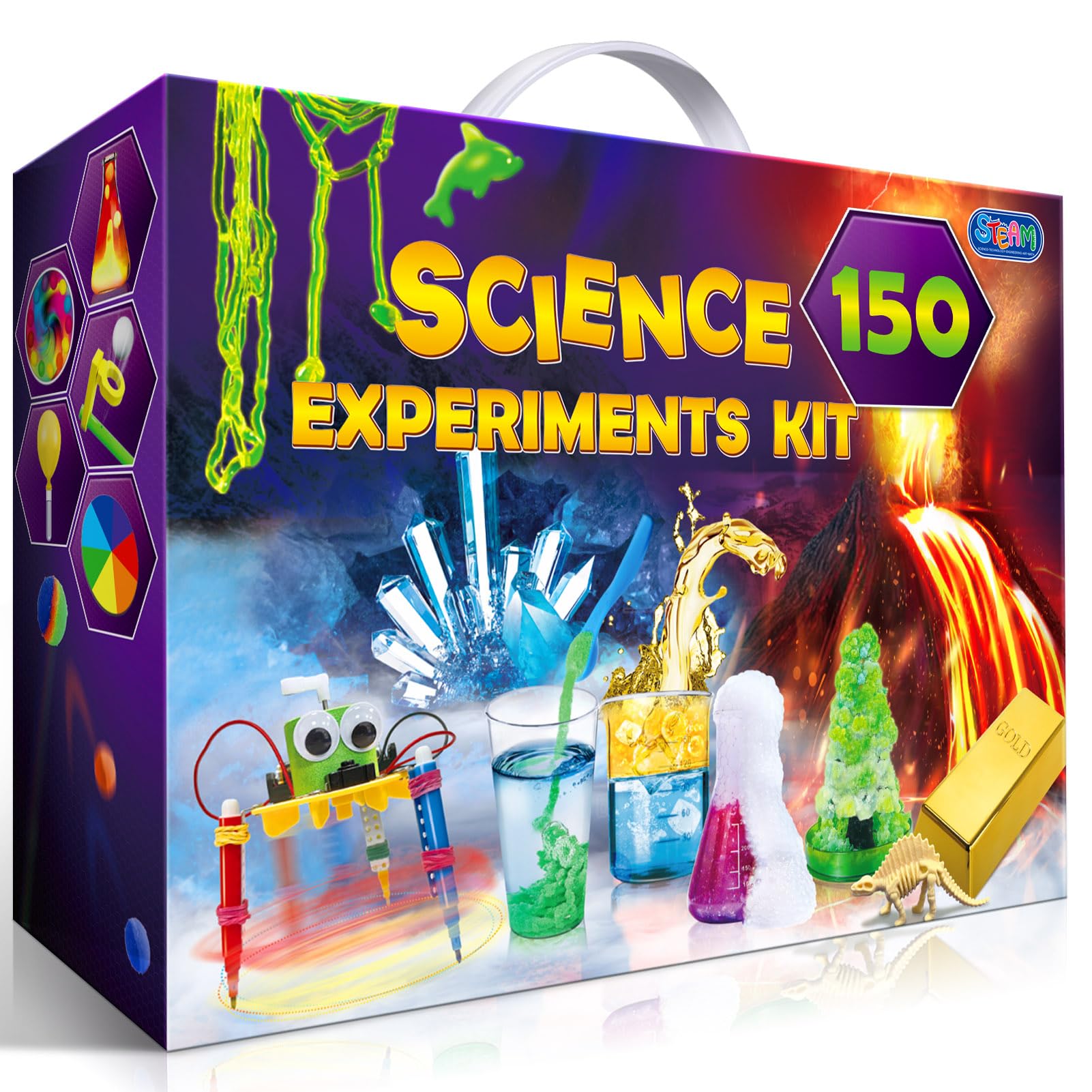
- Bridges the Gender Gap in STEM
- STEM toys encourage all children, regardless of gender, to explore traditionally male-dominated fields like engineering and technology.
- Providing opportunities for girls to engage with STEM toys can help build their confidence and interest in these areas from an early age.
- Supports Logical Thinking and Decision-Making
- STEM toys encourage kids to use logic and make decisions based on evidence and reasoning.
- Activities like programming a robot or building a stable structure teach kids to plan, test, and refine their approaches.
- Prepares Kids for Future Careers
- STEM fields are rapidly growing and in high demand.
- STEM toys introduce kids to the skills they’ll need for success in these fields, such as coding, engineering, and scientific experimentation.
- While playing, they’re also gaining foundational knowledge that could spark interest in a future career.
- Reduces Screen Time
- STEM toys provide a hands-on alternative to screens, keeping kids engaged and entertained without the need for digital devices.
- They offer a constructive way to spend time while also promoting learning and skill development.
- Makes Learning Fun
- STEM education toys turn complex subjects into enjoyable and accessible activities.
- Kids see science, technology, and math not as intimidating, but as exciting areas to explore.
By incorporating STEM education toys into your child’s playtime, you’re not just giving them a toy—you’re equipping them with tools to develop essential skills, build confidence, and prepare for the challenges of tomorrow. These toys make learning exciting and foster a love for exploration that can last a lifetime.
Types of Science Kits
Science kits come in many forms, each focusing on different areas of STEM and catering to various interests. Whether your child is into chemistry, robotics, or exploring the natural world, there’s a kit designed to ignite their curiosity. Here are some of the most popular types and what they offer:
1. Chemistry Kits
Chemistry kits are perfect for kids who love mixing and creating. They often include experiments that teach foundational concepts like chemical reactions and states of matter.
Key Activities:
- Growing crystals.
- Making slime or bath bombs.
- Creating a baking soda volcano.
2. Biology and Nature Kits
Biology and nature kits are great for exploring the living world and understanding ecosystems.
Key Activities:
- Growing plants in a terrarium.
- Observing insects or soil samples.
- Exploring anatomy with models.
3. Physics and Engineering Kits
These kits focus on building and experimenting with motion, energy, and mechanics. They help develop problem-solving skills and an understanding of how things work.
Key Activities:
- Constructing bridges or towers.
- Designing working roller coasters.
- Experimenting with pulleys, levers, and other simple machines.
4. Robotics and Coding Kits
For tech-savvy kids, robotics and coding kits are ideal for introducing programming and automation.
Key Activities:
- Building and programming a robot.
- Creating circuits that control lights or sounds.
- Designing moving vehicles using coding interfaces.
5. Earth Science and Space Kits
Earth science and space kits inspire curiosity about the planet and beyond.
Key Activities:
- Building a solar system model.
- Erupting a mini volcano.
- Identifying different types of rocks and minerals.
6. Electricity and Circuit Kits
Electricity kits make electrical engineering accessible through hands-on experimentation.
Key Activities:
- Creating a working light circuit.
- Building alarms or simple motors.
- Experimenting with switches, wires, and currents.
7. Math and Logic Kits
Math-focused kits make learning fun with puzzles and games that enhance critical thinking.
Key Activities:
- Solving geometric puzzles.
- Exploring patterns and sequences.
- Building and measuring shapes.
8. Environmental Science Kits
Environmental science kits introduce sustainability and eco-friendly practices in a hands-on way.
Key Activities:
- Building solar-powered devices.
- Learning about water filtration.
- Creating a small compost system.
9. Kitchen Science Kits
These kits explore scientific principles using everyday household items.
Key Activities:
- Making edible gummy candies.
- Testing buoyancy with household objects.
- Understanding chemical reactions like fermentation.
10. DIY and Open-Ended Kits
DIY kits encourage creativity by allowing kids to design their own experiments.
Key Activities:
- Creating personalized projects like lava lamps.
- Designing unique experiments with provided tools.
- Exploring science without rigid guidelines.
By choosing a science kit tailored to your child’s interests, you can spark curiosity, make learning enjoyable, and inspire a lifelong love for discovery.
Best Product Suggestions for Kids' Science Kits
Finding the right science kit can make a huge difference in engaging your child with hands-on STEM learning. Below are some highly recommended kits, each with detailed mini-reviews to help you understand what they offer and why they’re great.
This kit brings the magic of chemistry to life by letting kids grow their own vibrant crystals. It includes all the essential tools: crystal-growing powders, stirring sticks, and a light-up display stand to showcase the finished creations. The instructions are clear and easy to follow, making it ideal for beginners. Within a few days, your child can watch their crystals form and grow into dazzling shapes.
- Why it stands out: The combination of hands-on experimentation and a beautiful final product makes this kit both educational and rewarding.
- Best for ages: 8+
- Skills developed: Understanding chemical reactions, patience, and observation.
This kit introduces kids to the fascinating world of electricity and circuits. With over 30 color-coded snap-together components, children can build 100 different electronic projects, including a functioning alarm, a fan, and a light switch. It’s completely safe as there’s no need for soldering or complicated wiring.
- Why it stands out: The snap-together design is intuitive and encourages independent learning while making electrical concepts approachable.
- Best for ages: 8+
- Skills developed: Electrical engineering, logical thinking, and problem-solving.
Designed for younger children, this kit is a gentle introduction to robotics and engineering. It includes oversized, colorful pieces that are easy for small hands to manipulate. Using the included storybook guide, kids can build models like a rolling car or a walking robot, following along with fun, easy-to-understand narratives.
- Why it stands out: The storytelling approach makes it engaging for younger children while teaching fundamental engineering concepts.
- Best for ages: 5–7
- Skills developed: Basic robotics, spatial reasoning, and creative thinking.
This eco-friendly kit allows kids to explore the science behind weather phenomena. It includes tools and instructions to create activities like making clouds in a bottle, building a wind vane, and constructing a rain gauge. The hands-on experiments help children understand concepts like air pressure, the water cycle, and wind patterns.
- Why it stands out: It combines environmental awareness with practical experiments that connect science to real-world weather events.
- Best for ages: 8+
- Skills developed: Meteorology, environmental science, and observation.
This classic science kit lets kids build and erupt their own volcano. The kit comes with a mold for the volcano, paints to customize it, and the necessary ingredients for creating a safe and exciting eruption. The simple setup and dramatic results make it a favorite for younger children.
- Why it stands out: It’s an engaging way to teach kids about chemical reactions and geology, with a focus on creativity through customizing their volcano.
- Best for ages: 6+
- Skills developed: Chemistry, geology, and cause-and-effect understanding.
A combination of LEGO building and robotics, this kit offers five unique projects, including building a moving robot, a guitar that plays music, and a rover. The kit pairs with an app that allows kids to program their creations with simple drag-and-drop coding, making it both educational and fun.
- Why it stands out: It integrates the familiarity of LEGO with the excitement of robotics and coding, making it perfect for creative and tech-savvy kids.
- Best for ages: 7–12
- Skills developed: Robotics, programming, and engineering.
Inspired by the beloved TV series, this kit includes all the tools needed for 51 exciting experiments. Kids can make slime, create bubbling reactions, test pH levels, and more. Each activity is explained with detailed instructions and educational materials, helping kids understand the science behind their experiments.
- Why it stands out: The variety of experiments keeps kids engaged, and the connection to The Magic School Bus makes it relatable and fun.
- Best for ages: 6–12
- Skills developed: Chemistry, critical thinking, and curiosity about scientific concepts.
Top Tips for Parents and Guardians
Helping your child get the most out of a science kit is easier than you think! Here are some practical and easy-to-follow tips to ensure the experience is fun, safe, and educational:
- Choose the Right Kit
- Match the kit to your child’s age and interests.
- Younger kids: Simple kits with basic experiments like color mixing or magnetism.
- Older kids: Robotics, coding, or advanced chemistry kits.
- Pay attention to what excites them—nature, building, or technology? Align the kit with their curiosity.
- Set Up a Safe Workspace
- Use a clean, well-lit table or desk with enough room to spread out materials.
- Protect surfaces with newspaper or a plastic sheet for messier activities.
- Keep essentials like water, paper towels, and cleanup supplies nearby.
- Guide, Don’t Take Over
- Review the instructions together before starting.
- Let your child take the lead, even if it means making small mistakes—they’ll learn more this way.
- Be present to supervise, especially for kits involving chemicals or small parts.
- Encourage Curiosity and Exploration
- Ask open-ended questions to spark critical thinking:
- “What do you think will happen?”
- “Why do you think this worked (or didn’t)?”
- Allow room for creativity. If they want to tweak the experiment, support their curiosity.
- Turn Failures Into Lessons
- Experiments don’t always go as planned—that’s part of learning!
- Discuss what might have gone wrong and brainstorm ways to improve or try again.
- Celebrate the effort, not just the result.
- Make It Relevant to Everyday Life
- Connect the experiment to real-world examples:
- A circuit kit can lead to discussions about how lights work in the house.
- A weather kit can spark conversations about storms or the water cycle.
- This helps kids see the value of what they’re learning in a broader context.
- Celebrate Their Achievements
- Praise their efforts, even if the experiment didn’t work perfectly.
- Display their creations or take photos to show their progress.
- Supplement with Extra Learning
- Explore additional resources like books, videos, or online tutorials to expand on the concepts in the kit.
- For example: After a coding kit, try simple online coding games to deepen their skills.
- Be Patient and Flexible
- Some experiments require troubleshooting or take time to see results—stay positive and encourage persistence.
- Focus on making the experience enjoyable rather than perfect.
- By following these tips, you can transform a simple science kit into a meaningful and exciting learning journey. Your support, encouragement, and curiosity will make all the difference in helping your child explore and enjoy the wonders of STEM.
Final Thoughts
Science kits are much more than toys—they are powerful tools that foster curiosity, critical thinking, and a love for learning in children of all ages. These kits make STEM (Science, Technology, Engineering, and Math) concepts accessible, engaging, and interactive, bridging the gap between abstract ideas and real-world applications. Whether your child is a budding chemist, an aspiring engineer, or simply a curious learner, there is a science kit tailored to their interests and developmental stage.
Why Science Kits Matter
- Hands-On Learning: Kids actively participate in experiments, which helps them better understand and retain information.
- Encouraging Curiosity: Science kits provide an opportunity to explore, ask questions, and discover answers independently or with guidance.
- Skill Building: From problem-solving and logical thinking to patience and resilience, these kits teach essential life skills.
- STEM Foundations: Early exposure to STEM subjects through science kits can spark a lifelong interest and lay the groundwork for future academic and career success.
Choosing the Right Kit
Selecting the right science kit for your child involves considering their age, interests, and skill level. Younger children benefit from kits with simple, safe activities, like color mixing or growing plants, while older kids might enjoy robotics, coding, or chemistry experiments. Always check for safety guidelines and ensure the kit includes clear instructions and high-quality materials.
Types of Science Kits
Science kits cater to a wide range of topics, including:
- Chemistry Kits: Grow crystals, make slime, or explore chemical reactions.
- Biology and Nature Kits: Study plants, insects, or anatomy.
- Robotics and Coding Kits: Build and program robots to learn engineering and technology.
- Physics and Engineering Kits: Construct bridges, towers, or simple machines.
- Earth Science and Space Kits: Explore geology, weather, and astronomy.
These kits offer diverse learning experiences, making it easy to find one that aligns with your child’s passions.
Supporting Your Child’s STEM Journey
As a parent or guardian, your role in supporting your child’s exploration with science kits is invaluable. Create a safe and encouraging environment where they can experiment and make mistakes. Celebrate their achievements and use failures as opportunities to learn and grow. Ask questions, foster discussions, and, when possible, join in the fun—it’s a great way to bond while learning together.
The Bigger Picture
Beyond the immediate excitement of completing an experiment, science kits teach children how to approach challenges, think critically, and see the world through a scientific lens. These skills are not only essential in academics but also in solving everyday problems and understanding the world around them.
By investing in a science kit, you’re giving your child more than just a fun activity; you’re opening the door to a world of exploration, discovery, and creativity. Whether it’s building a robot, growing crystals, or simulating a volcanic eruption, these hands-on experiences have the power to inspire a lifelong love for learning. Science kits make education exciting, tangible, and, most importantly, enjoyable.


